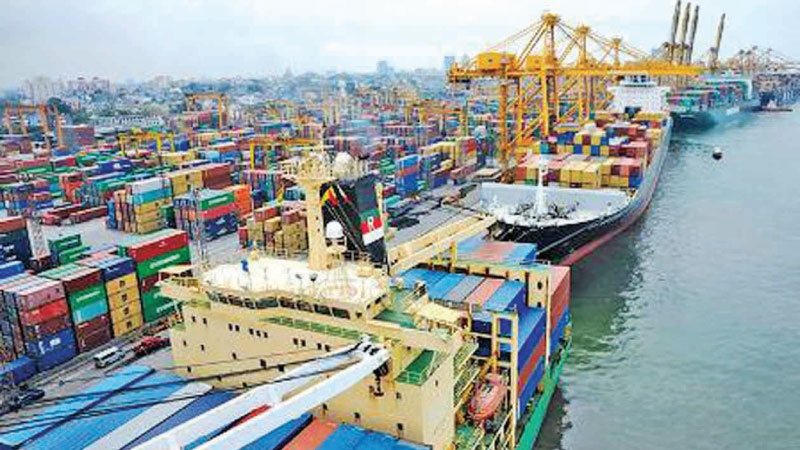A passenger ferry service between Kankesanthurai and South India is expected soon to facilitate displaced returnees and pilgrims home, said Sirimevan Ranasinghe, Secretary to the Ministry of Ports and Shipping and Western Development.
Delivering the key note speech at the German-Sri Lankan Logistics Conference held in Colombo yesterday, he said, the government has embarked on a massive development project to develop ports across the country to achieve Sri Lanka’s ambitious target of becoming a maritime hub in the region.
Accordingly, the port of Colombo will continue to develop its facilities for container handling by continuous addition of capacity, advanced handling and processing technology.
“The development of the East Container Terminal (ECT) will be followed by the West Container Terminal (WCT 1 and 2) ahead of demand. The ECT and the South Asia Gateway Terminal will be expanded to create an ultra large container terminal, expanding the total capacity to 35 million TEUs in the coming years.” he said.
Out of the six main ports in the country, Port of Colombo, Hambantota and Trincomalee have become the focal point for future development as far as international shipping and logistics are concerned, he noted.
He said further that the port of Hambantota will be managed as a commercially viable private enterprise. He noted that the port’s geographical positioning helps it to offer numerous services such as port services, maritime services , integrated logistics and even port related industries such as light , general or heavy industries along with community development.
He said further that Trincomalee port will use available lands and identify areas to attract port related investments. He however noted that port of Trincomalee and township still requires pertinent proposals for the development due to its strategic location in the Bay of Bengal.
“The port will be operated for coastal shipping as a leading port in the region servicing such India, Bangladesh, Myanmar, Thailand, Indonesia and even Malaysia,” he said.
The port of Galle will continue to handle conventional cargo, providing other services. The main breakwater will be rehabilitated as planned and the port will continue the planned development to establish yacht marina and tourism related developments.
The port of Oluvil required further studies to become a commercially viable port and to sustain itself, he said.
The port of KKS will be developed under the Indian credit line and the breakwater will be rehabilitated and two new berths will be built for cargo handling. He said further that wining and preserving market share will require to meet modern demands of shippers and he said this consideration is applicable to both the transshipment sector and import and export sectors.
He added that additional berth space planned with the Colombo’s East Container Terminal, will help alleviate congestion by increasing the port berthing capacity in the future.
“The importance of high quality logistics services look in to the future of transshipment business as development of physical capacity at competitive ports will eventually erode Colombo’s current vessel size advantage and the quality of service will be a more important determinant for selection of a port by shippers.
For all the practical reasons, Colombo port is heavily focused on growth in the transshipment market.
The one area that will be critical to ensuring the future growth is the tracking and tracing of the transshipment cargo once it is enters into a terminal from a vessel and this will also ensure the timeliness of the port operations and assist in berthing, the planning coordination between terminal operators and ocean carriers,” he said.



Add new comment